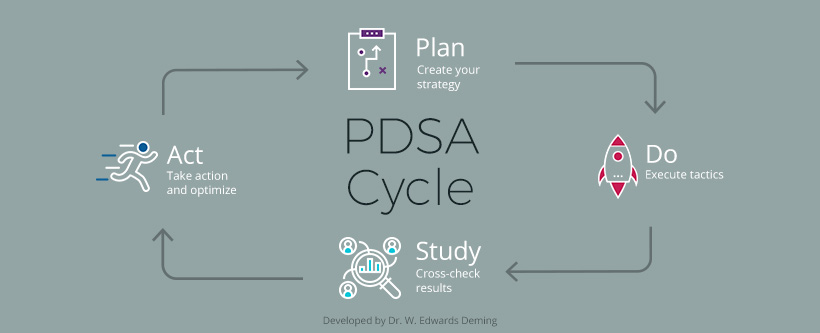To create a content marketing strategy for social, content marketers must change their mindset. Social media isn’t simply a means for amplification of content. Content marketing strategy for social requires listening, visual storytelling, auditing competitors, and tracking and measuring engagement.
Most content marketers get social media wrong because they only view it as an amplification channel. If you plan to use your content marketing strategy for social media as a means to “advertise,” it’s time to change direction.
Your audience is on social media because they want to socialize. They want to communicate and interact with a community that shares their common interests. Show that your brand genuinely belongs to the same community and you will be all the more successful.
Let’s further evolve your view of social media as follows: When you view social media as another channel to help you achieve the same business objectives you have for your content marketing, you begin to discover the massive potential it has for your business. On the other hand, because social media represents the convergence of information and communication, businesses need content in order to engage in social media. In other words, as I am fond of saying, “Content is the currency of social media,” but knowing on what social networks you will publish which content for whom is sometimes an afterthought for content marketers. With this in mind, every content marketer needs to create a unique content marketing strategy for social media. Here’s how.
Note: There are a handful of other very important steps that should also be included in your content marketing strategy. Those listed below are those that are specifically related to the “social” aspect of the strategy. For a broader list, please see my post on content marketing strategy best practices.
The key steps your content marketing strategy for social media should include:
Audit your competitors
Because social media provides a lot of business intelligence on how other companies are using social media, I always recommend auditing your competitors as a first step in creating your content marketing strategy for social. Your competitors are also doing their best to capture leads and increase their social media following, so why not stand on the shoulders of giants and take advantage of what they have learned?
You do not need to copy your competitors’ social media approach outright. Instead, perform competitive research and look for at least the following data to give you insight into what you might be missing out on:
- Which social network(s) they have a presence on
- Popularity of their social media accounts by network(s)
- Their high-performing content for each social network
- Topics that are covered for each social network
- Topics that aren’t covered but should be, where you will have a great opportunity
- Who is engaging on which social network with what type and subject matter of content
This competitive audit should give you an idea of which social networks your target users are on and which types of content and subject matter perform best.
Understand the different content mediums to use in social
When you begin to think of each social network as if it were its own country with a unique culture, you begin to understand how truly diverse social media is. Different people consume different content differently. This is one reason why you have to provide them with different forms of content.
Social networks also display different types of content differently. For instance, a tweet with an image will appear more prominently in the news feed and thus gain more engagement than tweets without them.

Of course, each social media platform also has a limitation on the types of content you can publish on their site.
Here are some of the mediums you can use for your content marketing strategy:
- Status update
- Link (to your website as well as other URLs)
- Blog
- Infographic
- Meme/quote
- Presentation (for LinkedIn SlideShare)
- Discussion (LinkedIn Groups, Facebook Groups, Twitter Chats or Parties, etc.)
- Photo
- Video
- Livestream
- Slideshow story (such as in Instagram Stories)
- User-generated content (promoting hashtags through campaigns, etc.)
- Third-party content (curated content — more on this below)
Now combine your content inventory data, the potential social networks, and the content mediums needed for each social network, and identify the best mediums you can use for republishing content as is as well as repurposing content. This will also give you some insights whether you need to create new content in which type of medium.
Many companies find that they lack the visual content they need to be successful in social media. There are many user-friendly visual content creation tools you can use to create professional-level visual content. Find which ones suit your needs. Before doing that, though, begin developing your visual voice.
Develop your visual voice
If visual platforms like Instagram are commonly used by your targeted demographic, you have to create a visual voice that best represents your brand. Define your visual voice and engage with your audience. The following ideas can serve as a guide to help you create visual content that you would want to share over social media:
- Product photos done in a creative way as if taken by a social media user
- “Behind the scenes” images
- Snapshots of your Employees/selfies
- Images from events
- Holiday-related images
- Quotes/memes
- User-generated content from fans (reposts)
- Videos
- How-to videos
- Old images for #TBT (Throwback Thursday)
- Campaigns (chats/tag-a-friend sweepstakes/hashtag contests)

Learn how to become a good curator of content
It’s clear that being effective in social requires publishing a lot of content. Unfortunately, most companies simply cannot keep up with the pace which social media requires to be effective in terms of content creation. Don’t worry: There’s an easy way to combat this.
Content curation, or publishing content from third-party sources, is a great way to both build community and engage your audience. Once you begin to think about the needs of your target audience, you can begin to think about other content that complements your own and serves as a resource for them. There are plenty of industry sources (who aren’t your direct competitors) publishing great content, and sharing that content helps you build thought leadership and shows that you are not overly self-promotional.
Measure, analyze and optimize with PDSA
As social media continues to evolve, you need to measure your content efforts to ensure that you are both meeting your business objectives as well as posting the most optimum content on the appropriate social networks. I have always viewed social media as one large experiment because of its ever-changing nature, and therefore I use a framework for a social media strategy that was developed decades ago by Dr. W. Edwards Deming to manage controlled experiment: The PDSA (or Deming) Cycle.
PDSA is a simple yet eloquent concept that is perfect to help you manage and optimize your content marketing strategy for social:
- P = Plan. This is the strategy that you will create, include the objectives and associated KPIs you will create to determine the ROI of your activities.
- D = Do. This is the execution part, but it is critical that activities are completely aligned with the tactics outlined in your strategy.
- S = Study. Many companies are good at the “Do” but fail to “Study” and therefore miss out on the opportunities to optimize. This is where you want to check the outcome of our activities with the assumptions in your strategy. You will need to find ways to measure the performance of your content in social vis-à-vis the KPI metrics you determined important to begin with.
- A = Act. Act means to take action or optimize based on the results you are seeing. Because of the ever-changing nature of social media, you always need to be optimizing; therefore, make sure you are reviewing the results of your strategy on a regular basis and adjusting appropriately.
There are a lot of analytics tools that can help you with the metrics to help measure your efforts. Identify which of the metrics you need from which tools and start working from there. Once you have assimilated these key steps into your content marketing program, you can now implement your playbook with efficiency. Your goals and objectives are within your reach.
Understanding these key steps will give you the necessary guidance and direction towards a successful engagement with your audience. Don’t forget, though, that there is an ongoing evolution in terms of best practices in social media due to the changing of social media users’ behavior on platforms as well as the introduction of new features. Take the above advice and continue to refine your content strategy using the PDSA concept.





